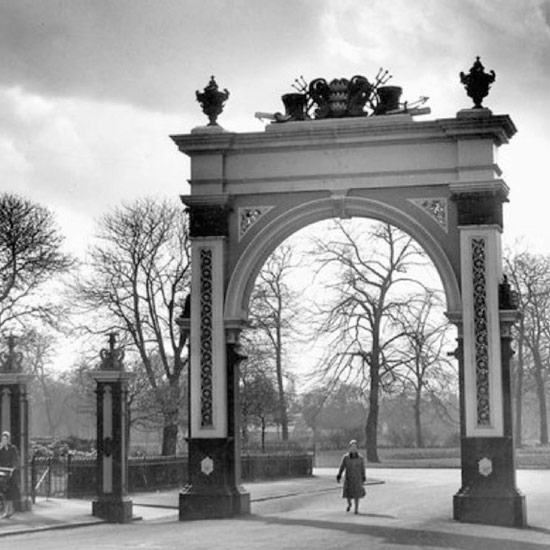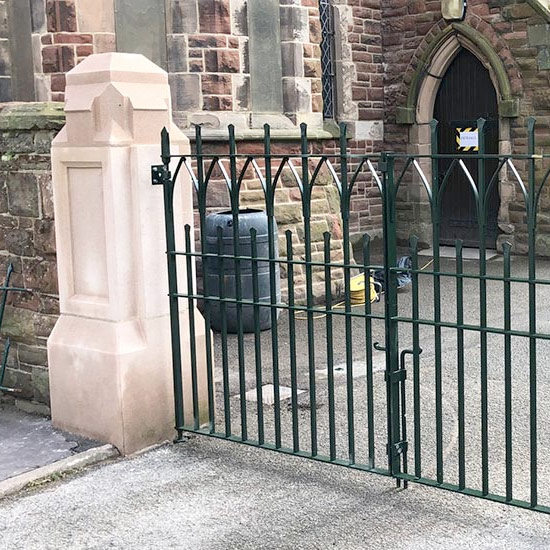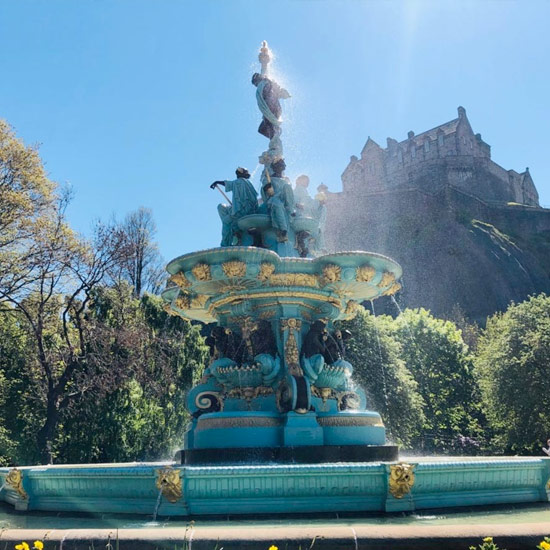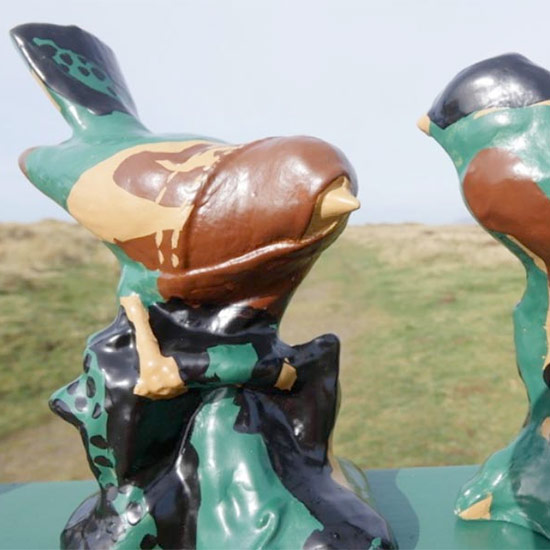The Wallace Memorial, Stirling
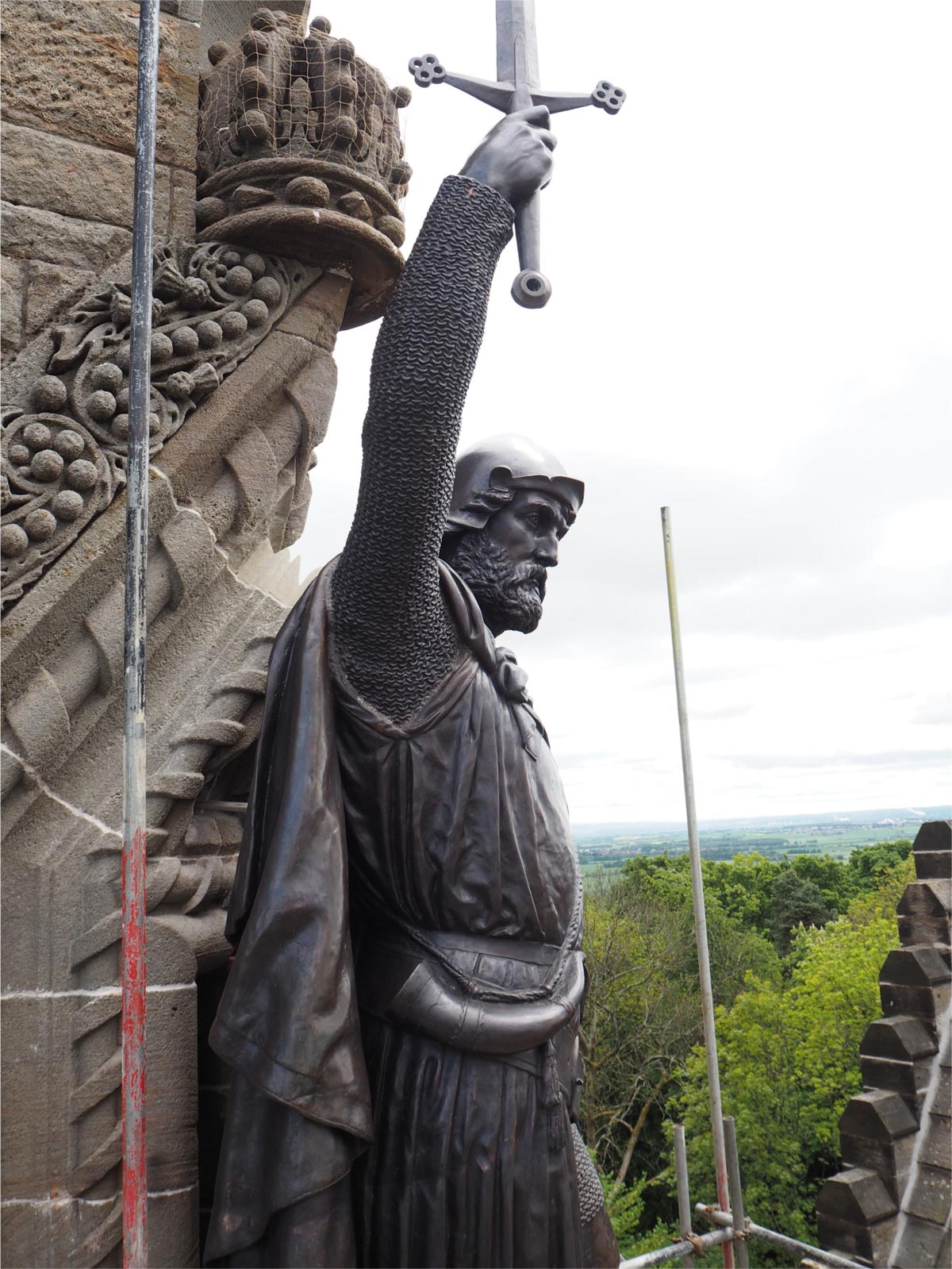
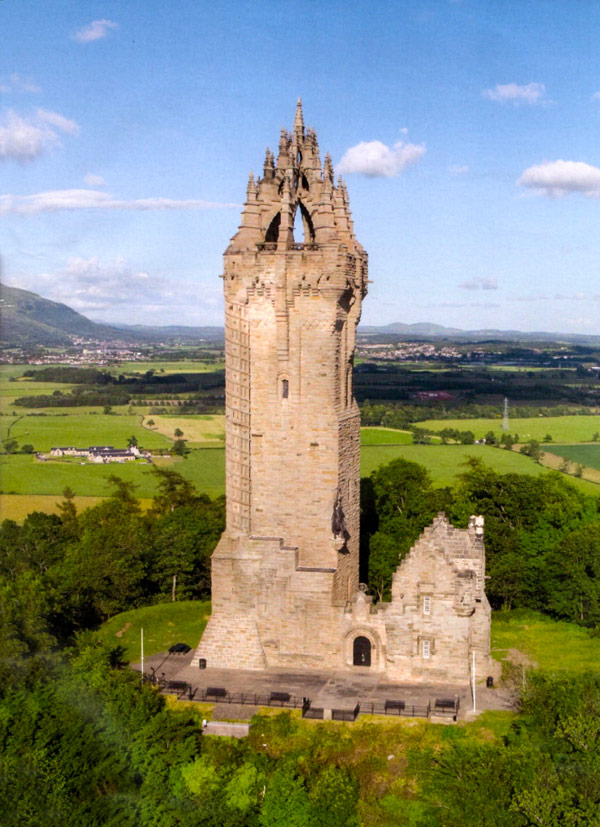
In keeping with many structures of that age, it was no longer fully operational and in need of significant repairs, having suffered damage as a result of significant corrosion as well as vandalism and other accidental occurrences, including the removal of elements of the fountain, meaning that they were no longer present, requiring the production of replacement components.
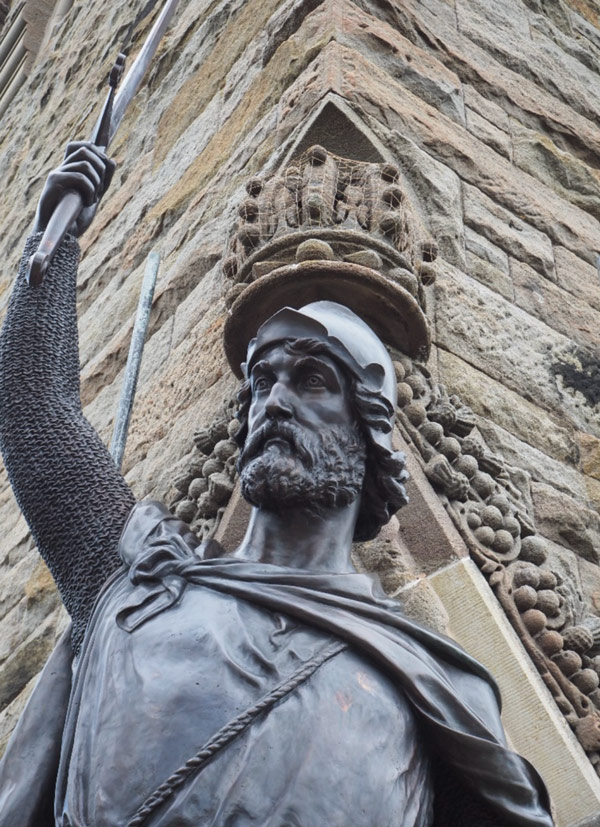
Given the sensitivity surrounding the iconic nature of the statue and the previous history surrounding Wallace and the English, this was a restoration with a significant degree of responsibility.

In terms of supervising the project, there was a significant responsibility, not only to be mindful of our code of ethics in relation to restoration and conservation practices but also in relation to the nature of the monument and what it represented, both to the client but also the stakeholders, that included not only the local community, for whom the monument is a focal point but also the symbol of Nationalism and historic identity that extended beyond the borders of Scotland to encompass the whole of the Scottish diaspora.
Project Description
Project: Restoration of the bronze statue, The National Wallace Monument, Stirling
Client: Stirling City Council
Given the sensitivity surrounding the iconic nature of the statue and the previous history surrounding Wallace and the English, this was a restoration with a significant degree of responsibility.
In terms of supervising the project, there was a significant responsibility, not only to be mindful of our code of ethics in relation to restoration and conservation practices but also in relation to the nature of the monument and what it represented, both to the client but also the stakeholders.
These include, not only the local community, for whom the monument is a focal point but also the symbol of Nationalism and historic identity that extends beyond the borders of Scotland to encompass the whole of the Scottish diaspora.
The work can be summarised as follows:
- Building a structural scaffold suitable for the range of work required, including lifting the statue down to the esplanade level and replacing it
- Constructing a bespoke lifting frame
- Arranging suitable transporting equipment to negotiate the route up to the monument and safely carry out the works
- Releasing and taking down of the D W Stevenson bronze statue of Wallace from the north west corner of the monument tower
- Extract and replace the fastening bolts through the building and fixings to the statue
- Carrying out the repairs to the eroded corbel stonework
- Carrying out repairs to the stained-glass window behind the statue
- Removing and replacing the internal wrought iron armature from inside the statue
- Carrying out repairs to the fractures in the main statue and shield
- Carry out re-patination of the statue
- Reinstating the statue with new fixings to the refurbished corbel mounting
In addition conducting extensive personal research, this fed into the important task of making both the management team and the remainder of the project team aware of the history and significance of the project. The importance of this was demonstrated when there was media interest in the project, especially in the early stages when there was potential for hostility in relation to the removal of the statue to England rather than the work being carried out in Scotland. The awareness and management of these issues can be considered a reflection on the professionalism, ethics and values demonstrated within the project as the history added a political dimension to the work that had not been experienced in other projects and called for professional judgements beyond those that would normally be expected.
Given the unique nature of both the situation and the material components of the project, the project offered further opportunities for Continuous Professional Development, including those offered by working alongside the other professions involved. The challenge of working at heights and the removal and transport of the statue required innovation and cooperation and the unknown factors relating to the statue provided opportunity for innovative uses of technology in the form of 3D scanning of the statue, plus a digital radiographic survey in order to effectively calculate thickness of metal and by extension the weight and the actual structural integrity of the item. These findings then led to the development of alternative techniques made necessary by the findings. This also involved close cooperation with the consultant engineer, scaffolding professional and civils contractor in order to ensure the development of the most appropriate method statements and health and safety concerns and procedures.
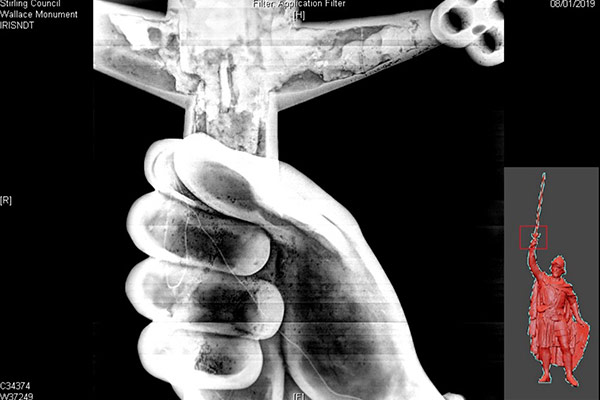
The challenge of working at heights and the removal and transport of the statue required innovation and cooperation and the unknown factors relating to the statue provided opportunity for innovative uses of technology in the form of 3D scanning of the statue, plus a digital radiographic survey in order to effectively calculate thickness of metal and by extension the weight and the actual structural integrity of the item.
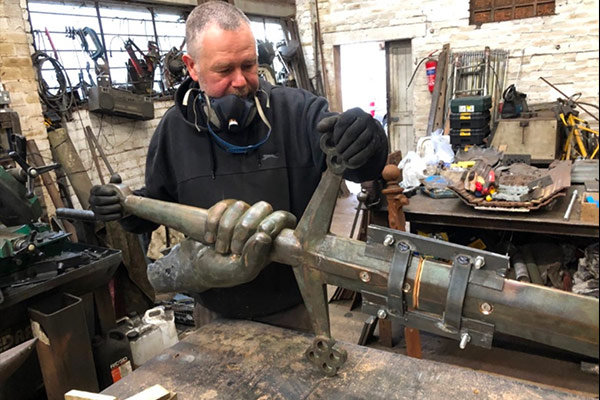
The disassembly process revealed much new information about the initial production of the statue.
Working on site we were able to discover that the statue was in fact constructed of 8 parts and had been apparently assembled in situ, using lead at the junctions of the assembled parts – this reflects the lower melting point of lead compared to bronze and allowed us to disassemble some parts of the statue using topical heating methods under carefully controlled conditions. In other cases, the careful use of reciprocating saws was implemented, a process that required considerable planning and monitoring given the height of the operation and the potential effects of the weather at the exposed location.
As with many of our projects, the gathering of local meteorological information from a number of sources is implemented before such weather dependent operations are commenced. An integration of procedures and operatives was vital as, not only did the statue require gradual dismantling, this had to be done with regard to the stonework that was to be protected during this process and then left for the repairs to be conducted during the period in which the statue was undergoing repairs – a reflection of the need for careful and considered timetabling and integration of professions and processes.
The findings of the imaging and surveys were also borne out once the statue was fully examined in the workshop and the ongoing investigation yielded further unexpected findings that had to be conveyed to the client along with recommendations as to how techniques and procedures required alterations, if the project were to be completed successfully. We were able to demonstrate to the client and the funding and supervisory bodies that the findings required different techniques from those that had been anticipated when the initial job specifications had been drawn up. The internal structure of the statue was not as expected in terms of the armature and also there remained much more casting residue in terms of both sand and metal within the statue that threatened the long-term integrity of the structure. Having liaised with all stakeholder groups, we were able to successfully implement all our methodological suggestions as we were able to demonstrate both their functional validity and relationship to the conservation ethos demanded by the client and funding bodies.
Although the discoveries meant that additional work was required, we were also able to propose cost saving procedures that would offset any budgetary increase and that these would also have positive effects by reducing the weight and increasing the stability of the statue.
Having implemented the required processes, whilst preparatory work had been taking place on site as the specialist stonework contractors undertook repairs and preparation, the statue was returned to site and safely reinstalled in position.
In regard to this particular project, our particular area of expertise lies in the planning and execution of the restoration of landscape furnishings, particularly those of the Victorian and Edwardian periods with a substantial decorative metalwork component – in this instance the full restoration of the statue itself. However, this had to be integrated with the additional activities, such as the stonework conservation in a manner that was both timetabled effectively in relation to the effect of public experience of the landscape feature and also the cost implications. For example, the time required for scaffolding access to the structure was a considerable element of the costing, not only in terms of the erection and maintenance but also, with especial reference to its height, the security and safety aspects and costs associated with it. As main contractors, alongside our specialist areas of operation, we also had to maintain the scheduling, logistical and costing elements of the projects, along with the client and stakeholder liaison. Having established a small, highly experienced and stable team over a period of years, where team members are both aware of their responsibilities and trusted to implement them, it is possible to be confident that the projects will proceed to completion as planned, even where, as described, there must be flexibility in implementation given that the nature of dealing with historic structures and fittings means that expecting the unexpected is an accepted part of the project.
The restoration was completed on time and within the planned budget as a reflection of the above.

